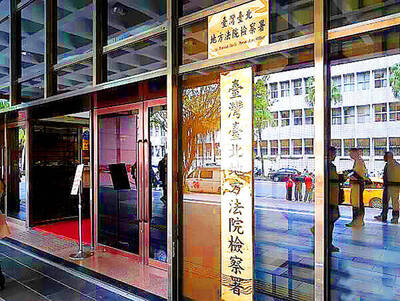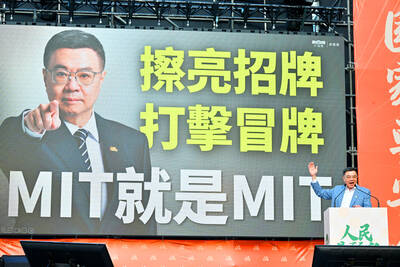Gold prices will outperform those of other precious metals such as silver and platinum as political tensions, a weakening dollar and concerns of stagnant economic growth spur demand, analysts said.
The gold price will average US$336 an ounce this year, a gain of more than 8 percent from last year, according to the average expectations of 18 analysts contacted by Bloomberg. Silver will rise almost 7 percent to US$4.92 an ounce, while platinum should add almost 6 percent to US$571 an ounce. Palladium will sink 23 percent to US$260 an ounce, the survey found.
Gold last year had its biggest gain since 1979 as investors sought a haven from declining stock markets, a weakening dollar, terrorism and the threat of a war against Iraq. Fifteen out of 18 respondents in the survey predicted an increase in gold prices, while only one expected a decline.
"The factors that drew gold higher in 2002 shall continue to prevail in 2003," said Frederic Panizzutti, a director at Geneva-based GoldAvenue, a trading and marketing service. "There is a threat of further terrorism and the risk for a military intervention in Iraq combined with volatile stock and currency markets."
Platinum will continue to benefit, after a 26 percent gain last year, from growth in demand that is outpacing supplies from mines, the analysts said. Demand was expected to rise 2.9 percent last year to 6.37 million ounces, almost half a million ounces more than mine production, according to Johnson Matthey Plc, the world's biggest precious-metals marketer.
Platinum, mined mostly in South Africa and Russia, is used in jewelry and by carmakers to make exhaust systems.
"The inability for new mine supply to meet this growing demand will produce several years of deficit," said Ingrid Sternby, an analyst at Barclays Capital in London. "We expect strong end-use demand from key sectors to keep prices firm."
Rival metal palladium is also used by carmakers in auto catalysts. They cut their purchases last year, leading to a drop in demand that meant consumption last year was probably its lowest since 1994, according to Johnson Matthey. The metal last year lost 46 percent of its value, prompting Russia, the biggest producer in 2001, to embargo sales to the open market.
Palladium is also used by dentists and by manufacturers of electronics, chemicals and jewelry.
"It is difficult to make a bullish case for palladium," said Ross Norman, a director at TheBullionDesk.com, a research company. "Car stocks are high, car sales are forecast to decline, the shift to platinum is gathering momentum and electronics demand looks terminal."
Silver is likely to be buoyed by the gains in gold, analysts said. A mean price of US$4.91 this year would be its highest yearly average since 2000, when it averaged US$4.96 an ounce.
* The gold price will average US$336 an ounce this year, a gain of more than 8 percent from last year, according to expectations of 18 analysts.
* Silver will rise almost 7 percent to US$4.92 an ounce.
* Platinum should add almost 6 percent to US$571 an ounce.
* Palladium will sink 23 percent to US$260 an ounce, the survey found.

INVESTIGATION: The case is the latest instance of a DPP figure being implicated in an espionage network accused of allegedly leaking information to Chinese intelligence Democratic Progressive Party (DPP) member Ho Jen-chieh (何仁傑) was detained and held incommunicado yesterday on suspicion of spying for China during his tenure as assistant to then-minister of foreign affairs Joseph Wu (吳釗燮). The Taipei District Prosecutors’ Office said Ho was implicated during its investigation into alleged spying activities by former Presidential Office consultant Wu Shang-yu (吳尚雨). Prosecutors said there is reason to believe Ho breached the National Security Act (國家安全法) by leaking classified Ministry of Foreign Affairs information to Chinese intelligence. Following interrogation, prosecutors petitioned the Taipei District Court to detain Ho, citing concerns over potential collusion or tampering of evidence. The

‘FORM OF PROTEST’: The German Institute Taipei said it was ‘shocked’ to see Nazi symbolism used in connection with political aims as it condemned the incident Sung Chien-liang (宋建樑), who led efforts to recall Democratic Progressive Party (DPP) Legislator Lee Kun-cheng (李坤城), was released on bail of NT$80,000 yesterday amid an outcry over a Nazi armband he wore to questioning the night before. Sung arrived at the New Taipei City District Prosecutors’ Office for questioning in a recall petition forgery case on Tuesday night wearing a red armband bearing a swastika, carrying a copy of Adolf Hitler’s Mein Kampf and giving a Nazi salute. Sung left the building at 1:15am without the armband and apparently covering the book with a coat. This is a serious international scandal and Chinese

Seventy percent of middle and elementary schools now conduct English classes entirely in English, the Ministry of Education said, as it encourages schools nationwide to adopt this practice Minister of Education (MOE) Cheng Ying-yao (鄭英耀) is scheduled to present a report on the government’s bilingual education policy to the Legislative Yuan’s Education and Culture Committee today. The report would outline strategies aimed at expanding access to education, reducing regional disparities and improving talent cultivation. Implementation of bilingual education policies has varied across local governments, occasionally drawing public criticism. For example, some schools have required teachers of non-English subjects to pass English proficiency

TRADE: The premier pledged safeguards on ‘Made in Taiwan’ labeling, anti-dumping measures and stricter export controls to strengthen its position in trade talks Products labeled “made in Taiwan” must be genuinely made in Taiwan, Premier Cho Jung-tai (卓榮泰) said yesterday, vowing to enforce strict safeguards against “origin laundering” and initiate anti-dumping investigations to prevent China dumping its products in Taiwan. Cho made the remarks in a discussion session with representatives from industries in Kaohsiung. In response to the US government’s recent announcement of “reciprocal” tariffs on its trading partners, President William Lai (賴清德) and Cho last week began a series of consultations with industry leaders nationwide to gather feedback and address concerns. Taiwanese and US officials held a videoconference on Friday evening to discuss the